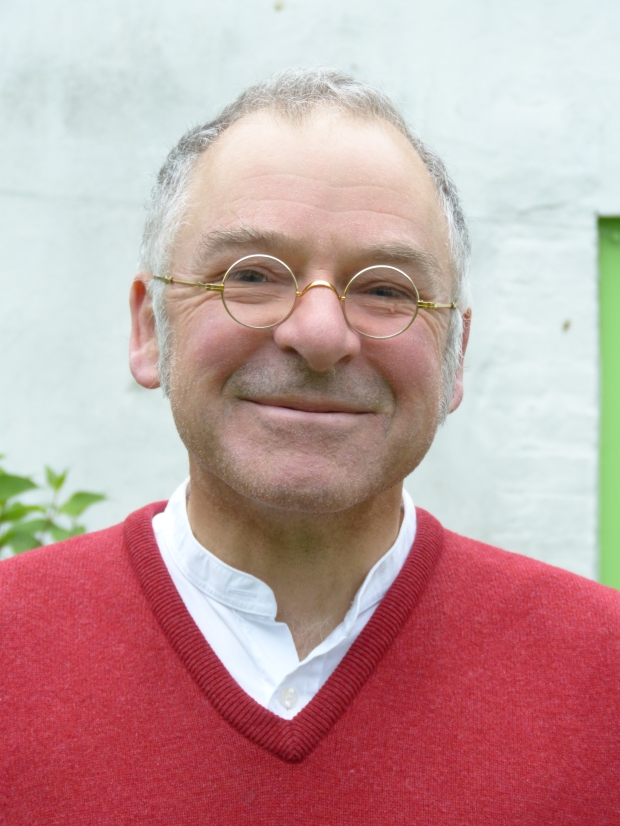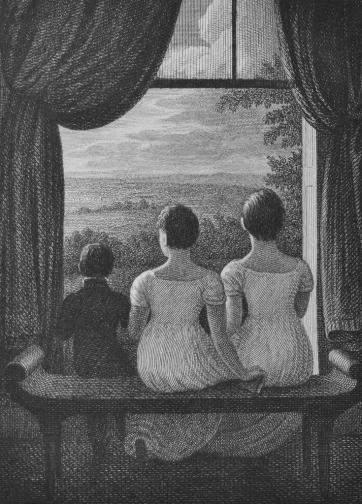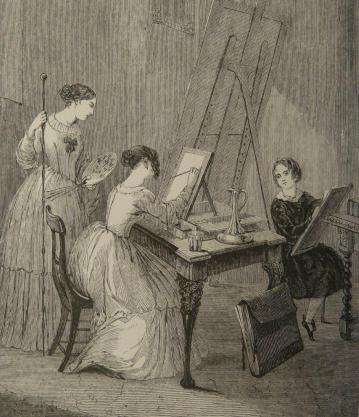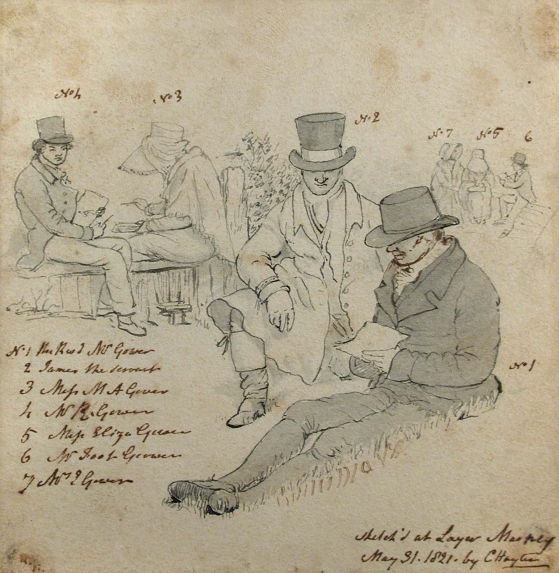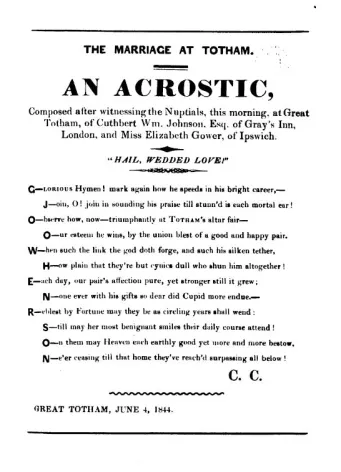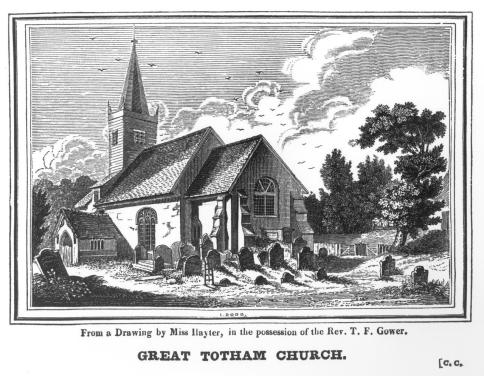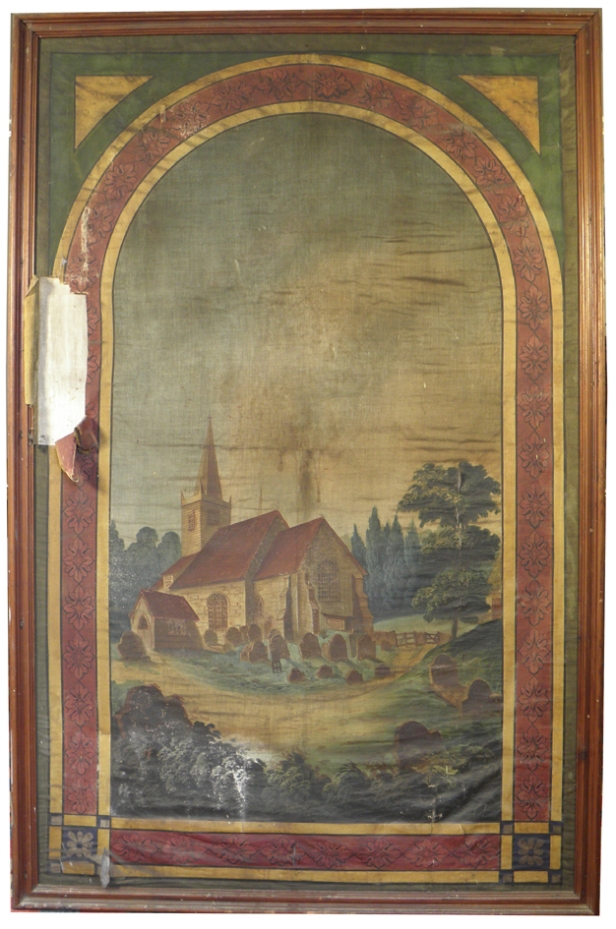Thomas Foote Gower was born in Chelmsford in 1763, the eldest son of the Revd Foote Gower (1725/6-1780) and his wife Elizabeth, sister of John Strutt M.P. (1727-1816), the builder of Terling Place. Foote Gower, although born in Chester, lived in Chelmsford, and for a time rented the house known as Guy Harlings in New Street. He had qualified as a physician and seems to have practised to some extent, as well as being rector of the combined parishes of Chignall St James and Mashbury from 1761 to 1777; John Strutt was the patron of the livings. Gower separately held the living of Woodham Walter from 1769 until his death. He was a keen antiquary, and gathered material for a history of Cheshire; Michael Leach has made a case for his being the author of the anonymous New and Complete History of Essex by a Gentleman (1769-72). Foote and Elizabeth Gower had two other sons: Charles (died 1822), a physician at the Middlesex Hospital, London, and Richard Hall (1767-1833), who became a naval architect and settled in Ipswich.

The Revd Foote Gower M.D., 1790 (Wellcome Library, London)
Thomas matriculated at Brasenose College, Oxford, on 30 March 1781, and graduated as Bachelor of Arts in 1785. In 1788 he was ordained deacon on 28 July and priest on 4 August by the Rt Revd Claudius Crigan, Bishop of Sodor and Man; this followed his nomination, on 21 July 1788, to the post of curate of Malew, on the Isle of Man, at a stipend of £20. How he came by this obscure post is not recorded. The next we hear of him is in 1810, when he is appointed rector of Snoreham (a sinecure – the church was described by Morant as ‘quite ruinous’ – but in the gift of John Strutt), as well as curate of Langford (£60) and Great Totham (£30). In 1814 he was licenced as stipendiary curate of Great Totham, with an increased stipend of £40 plus surplice fees and parsonage, and also of Little Braxted (£40, no parsonage). The vicar of Great Totham during this period was George Stepney Townley, instituted in 1777, but from 1784 he was also rector of St Stephen Walbrook with St Benet Sherehog in the City of London, where he resided, leaving Gower to his own devices in Great Totham. Townley was declared of unsound mind in 1829 and died in 1835, whereupon Gower became vicar, a post he held until his own death on 7 October 1849.

Thomas Foote Gower sketched by Charles Hayter in 1821: click here for further details
During his time at Great Totham, according to G. W. Johnson’s history of the parish published in 1831, Gower was ‘a very liberal benefactor of the Church: it was much improved and enlarged in 1826, chiefly at his expense’. He also ‘greatly enlarged and improved’ the vicarage house, which had been rebuilt in 1757, and created the garden around it.

Church and vicarage, 1878 (Clive Potter)
He was unmarried, but his sister Elizabeth lived with him (when she died in 1854, at the age of 94, she was described as ‘late of Great Totham Vicarage’), and he also gave a home to his niece Mary Ann Gower following R. H. Gower’s death in 1833; in 1844 she married, at Great Totham, Cuthbert William Johnson (1799-1878), an event celebrated by Charles Clark in an acrostic.
Gower was also hospitable to his nephews Richard Emptage Gower and Charles Foote Gower. In the Essex Record Office (D/DU 456/2) is a letter written by them from Great Totham to their father, R. H. Gower, on 7 June 1818. The boys were then about 13 and 11 years old.
We have had a very grand ball at Totham. There were about 9 couple. We began dancing at about 8 oclock, left off about half past twelve, and went to bed between 3 and 4 in the morning. There were 17 different country dances, and we went down every one. We danced in the drawingroom, and were attended by two musicians, one plaied the violin, and the other the tambarine… I forgot to tell you that after our dance we had a most elegant Supper. When you write again you must tell us whether you have cut any cucumbers.
A less amusing aspect of life came to the surface in 1843 when Gower, then 80 years of age, was the subject of a violent robbery. As he was walking through South Wood towards Maldon he was knocked down from behind and a sack thrown over his head. One man knelt upon his breast and another rifled through his pockets, taken a sovereign, a pair of spectacles, and other items. He begged his assailants not to take his watch, as this was a family heirloom, and they did not do so. Two men were arrested, William Carlow and Nehemiah Bacon. One was carrying a basket containing a piece of sacking similar to that which had been placed over Gower’s head, and shortly afterwards another basket was found which contained a knife bearing the initials and name of Carlow on its handle. Furthermore, Bacon made a violent resistance when taken into custody. But at their trial (reported in The Times, 13 December 1843), the men were acquitted; witnesses testified that at the time of the attack the two men were at work at a farmer’s in the neighbourhood.
